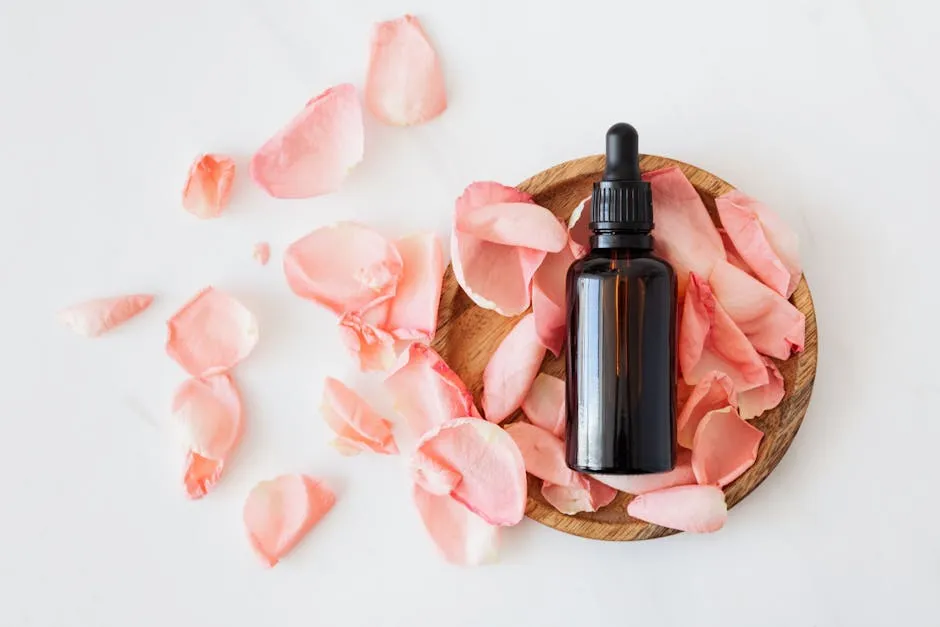
Why Does My Tea Tree Oil Have No Smell?
Introduction
Tea tree oil is a popular essential oil known for its antibacterial and antifungal properties. Many people use it for skin care, cleaning, and even aromatherapy. However, some users find their tea tree oil lacks the strong, characteristic scent. Understanding why this happens is crucial for ensuring you’re getting a quality product that delivers on its benefits.
To enhance your experience with tea tree oil, consider exploring the benefits of Essential Oil Blends for Relaxation. These blends can help create a calming atmosphere in your home, making it a perfect companion for your tea tree oil.
Summary and Overview
Tea tree oil, derived from the Melaleuca alternifolia plant, has been a staple in natural health for years. Its uses range from treating acne and dandruff to serving as a natural disinfectant. Genuine tea tree oil has a fresh, medicinal aroma, often described as camphoraceous, which is important for its effectiveness in aromatherapy. When tea tree oil lacks this scent, it raises concerns about its authenticity and quality. Several factors can contribute to the absence of smell, including poor sourcing, improper storage, and dilution with other oils. Recognizing these issues is vital for consumers to ensure they use effective and pure products.

If you’re looking to store your essential oils properly, you might want to invest in Dark Glass Essential Oil Storage Bottles. These bottles are perfect for protecting your oils from light exposure, which can degrade their quality over time.
Understanding Tea Tree Oil
What is Tea Tree Oil?
Tea tree oil is an essential oil extracted from the leaves of the Australian tea tree, Melaleuca alternifolia. This oil is known for its potent antimicrobial properties, making it a popular choice for skin treatments and household cleaning. The extraction process typically involves steam distillation, which captures the oil’s active compounds. Key components include terpinen-4-ol, which contributes to its distinct aroma and therapeutic effects. The typical scent of tea tree oil is fresh and earthy, often associated with its cleansing properties. This aroma plays a significant role in aromatherapy, promoting a sense of well-being and mental clarity.
Chemical Composition of Tea Tree Oil
Tea tree oil contains various chemical constituents. The most notable ones are terpinen-4-ol and alpha-terpineol. Terpinen-4-ol makes up about 35-48% of the oil, giving it a distinct medicinal aroma. Alpha-terpineol contributes to a more floral, refreshing scent, typically ranging from 2-5%.

The chemical makeup influences the oil’s scent and therapeutic properties. If the composition changes, the aroma can diminish, leading to a less potent scent. The source of the tea tree leaves and the extraction method can also impact the oil’s quality. For example, oils extracted through steam distillation tend to retain more of their natural fragrance. In contrast, oils that undergo less careful extraction may lose some aromatic qualities, resulting in a bland smell. Thus, knowing the oil’s origin and production method is crucial for understanding its scent profile.
While you’re diving into the world of essential oils, don’t forget to check out an Essential Oil Reference Guide Book. This book can be your trusty sidekick, helping you understand the various uses and benefits of essential oils, including tea tree oil!
Reasons for Lack of Smell
Quality of the Product
The quality of tea tree oil plays a vital role in its aroma. If the oil is low-quality or diluted, it can lack the strong scent typically associated with genuine tea tree oil. Pure tea tree oil has a distinctive, pungent aroma, while blended oils may have a milder or altered scent profile.

When purchasing tea tree oil, look for products labeled as “100% pure” or “therapeutic grade.” These designations usually indicate higher quality and authenticity. Sourcing from reputable suppliers ensures you’re getting a product that retains its intended therapeutic benefits. If you notice an unusual smell or lack thereof, it could indicate that the oil is compromised or of inferior quality.
If you’re concerned about skin care, consider trying Natural Skin Care Products. These can complement your tea tree oil routine and help you achieve healthier, glowing skin.
Oxidation and Age
Oxidation can significantly impact the scent of tea tree oil. When exposed to air, the oil can degrade and lose its aromatic qualities. Over time, this process can lead to a flat or stale smell.

Tea tree oil typically has a shelf life of about two years if stored correctly. To preserve its scent, keep the oil in a cool, dark place and away from direct sunlight. Ideally, store it in a dark glass bottle to minimize oxidation. If your tea tree oil has lost its smell, it might be past its prime and less effective for its intended uses. Always check for an expiration date and consider replacing old bottles to maintain quality.
Improper Storage and Usage
Many factors can cause tea tree oil to lose its scent, and improper storage is a significant one. When exposed to air, light, and heat, essential oils can degrade. This degradation leads to a loss of aroma and potency. Even the most premium oils can become ineffective if not stored correctly.

To maintain the quality and scent of your tea tree oil, store it in a cool, dark place, away from direct sunlight. Using dark glass bottles helps protect the oil from light exposure. Always ensure the cap is tightly sealed to minimize air contact. Avoid storing it in humid areas, like bathrooms, as moisture can also affect the oil. By following these simple storage tips, you can help preserve the aromatic qualities of your tea tree oil for longer periods.
Contamination and Adulteration
Contamination and adulteration are common issues that can alter the natural scent of tea tree oil. Many products on the market include additives or carrier oils, which can mask or change the oil’s original aroma. For instance, if tea tree oil is diluted with cheaper oils, it may lose its characteristic scent, resembling something entirely different, like a chemical cleaner.

Moreover, contamination can occur during production or storage. If the equipment used to extract the oil is not properly cleaned, residues from previous batches may mix in, affecting the scent. To ensure you’re using authentic tea tree oil, always buy from reputable suppliers. Look for products labeled “100% pure” to avoid diluted or compromised oils. This way, you can enjoy the genuine aroma and benefits of high-quality tea tree oil.
How to Identify Quality Tea Tree Oil
Label Reading
When shopping for tea tree oil, reading the label is essential. Look for key terms such as “100% pure” or “therapeutic grade.” These phrases suggest that the oil is of high quality and free from synthetic additives. Certifications from reputable organizations also indicate authenticity and safety.

Additionally, check for the ISO certification, which confirms the product meets international standards for purity. Be cautious of vague terms like “natural” or “essential oil blend,” as these can mask low-quality products. By paying attention to labels and certifications, you can ensure you’re investing in quality tea tree oil that delivers on its promises.
Sensory Evaluation
Before purchasing tea tree oil, a sensory evaluation can save you from buying a subpar product. First, take a moment to smell the oil. Genuine tea tree oil has a strong, medicinal scent, often described as camphoraceous. If it smells faint or pleasant, it might be diluted or low-quality.

Next, look for clarity in color. Quality tea tree oil ranges from pale yellow to colorless. If it appears murky or overly dark, that could indicate contamination or poor quality.
Lastly, pay attention to the packaging. Dark glass bottles protect the oil from light, which can degrade its quality over time. Check for labels indicating “100% pure” or “therapeutic grade.” If the product lacks these assurances, consider it a red flag. By being mindful of these factors, you can ensure you’re getting a quality tea tree oil that retains its powerful aroma and benefits.
Also, if you’re interested in enhancing your aromatherapy experience, consider investing in an Aromatherapy Diffuser. It can help disperse the delightful scent of tea tree oil throughout your space, making it a fantastic addition to your self-care routine!
Conclusion
In summary, tea tree oil can lack its characteristic smell for several reasons, including quality issues and improper storage. High-quality tea tree oil should have a strong, medicinal aroma. Remember, proper storage in a dark, cool place is essential for preserving its scent and effectiveness. Always be discerning when purchasing tea tree oil. Choosing reputable brands ensures you receive the best quality product for your needs. Share your experiences with tea tree oil in the comments below!

If you’re interested in exploring the versatility of tea tree oil, consider checking out Essential Oil Sample Kit. It’s a great way to try out different oils and find your favorites!
FAQs
How can I tell if my tea tree oil is pure?
To determine if your tea tree oil is pure, start by examining the label. Look for phrases like “100% pure” or “therapeutic grade.” These labels usually indicate a high-quality product. Additionally, check for certifications from reputable organizations. Next, evaluate the scent. Authentic tea tree oil has a strong, medicinal aroma, often described as camphoraceous. If your oil smells faint or pleasant, it may be diluted. Remember, genuine tea tree oil should have a potent, slightly pungent scent. Lastly, consider the packaging. Quality tea tree oils typically come in dark glass bottles. This protects the oil from light exposure, prolonging its freshness. By following these steps, you can ensure you’re using pure tea tree oil that provides its full benefits.
What are the benefits of using scented tea tree oil?
Scented tea tree oil offers various therapeutic benefits, particularly in aromatherapy. The strong aroma can help clear the mind and reduce stress. Many users find that inhaling its scent promotes relaxation and mental clarity. In aromatherapy, tea tree oil is often used to purify the air. Its antimicrobial properties can help eliminate airborne bacteria and viruses, creating a healthier environment. Research shows that pleasant scents can improve mood and cognitive function. Using scented tea tree oil in diffusers or personal care products can enhance your overall well-being. Its invigorating aroma supports respiratory health and can even alleviate symptoms of colds. So, not only does it smell good, but it also contributes to a healthier atmosphere.
Is it safe to use tea tree oil that has no smell?
Using tea tree oil without a smell raises concerns about its quality. If your tea tree oil lacks scent, it may be low-quality or oxidized. Low-quality oils often lack the therapeutic properties expected from pure tea tree oil. Moreover, old or improperly stored tea tree oil can lose its effectiveness. When oil undergoes oxidation, its chemical composition changes, potentially leading to skin irritation or reduced efficacy. If you find yourself with scentless tea tree oil, it’s best to err on the side of caution. Consider replacing it with a high-quality product to ensure you gain the essential benefits of this powerful essential oil.
How should I store my tea tree oil to keep it fresh?
Proper storage is crucial for maintaining the quality of your tea tree oil. Start by keeping the oil in a cool, dark place. Avoid areas with direct sunlight, as light can degrade the oil over time. Using dark glass bottles is ideal since they protect the oil from light exposure. Always ensure the cap is tightly sealed to minimize air contact. Excess air can lead to oxidation, which negatively affects the oil’s scent and potency. It’s also wise to avoid humidity. Storing tea tree oil in a bathroom can expose it to moisture, which may compromise its integrity. By following these simple storage tips, you can keep your tea tree oil fresh and effective for a longer time.
Can I mix tea tree oil with other essential oils?
Mixing tea tree oil with other essential oils can enhance its benefits and create pleasant aromas. Blending can also mitigate the strong scent of tea tree oil, making it more enjoyable to use. For example, combining tea tree oil with lavender can create a soothing blend. Lavender’s calming properties complement tea tree oil’s antiseptic benefits, making it ideal for skincare. Similarly, mixing with citrus oils like lemon or orange can brighten the aroma while adding uplifting qualities. However, be cautious about dilution. Always ensure that the tea tree oil remains effective in the mixture. A good rule of thumb is to maintain a concentration of 1-5% for safe application. Try experimenting with different combinations to discover what works best for you!
Please let us know what you think about our content by leaving a comment down below!
Thank you for reading till here 🙂
If you are curious about why your tea tree oil may have no smell, understanding its quality and storage is crucial. why does my tea tree oil have no smell
All images from Pexels




